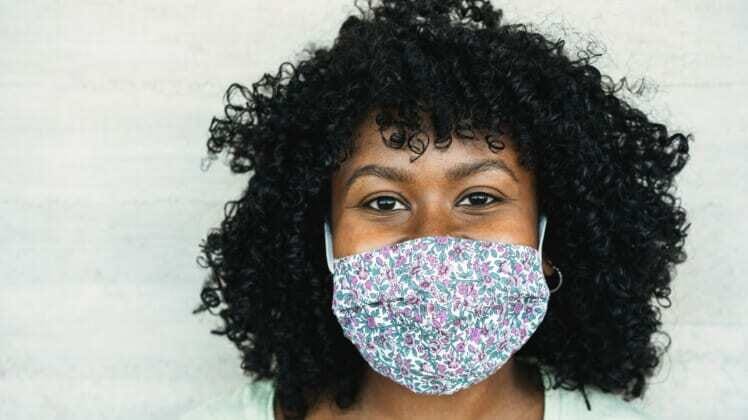
What is maskne, how do you prevent it, and what’s the best treatment? Experts weigh in.
As we continue to wear face masks in order to slow the spread of COVID-19, you may be experiencing increased breakouts. If so, you’re not alone. The skin condition has become so commonplace that people have starting referring to it as “maskne.”
You have likely heard about maskne by now, or perhaps the term is new to you—either way, it’s nothing short of annoying and can be tricky to treat. Still, that’s no excuse to stop wearing a mask which shields your nose and mouth from respiratory particles that potentially contain the virus.
Instead, adopting a maskne-proof skincare routine can help nip breakouts in the bud before they actually wreak havoc on your complexion. So, to help you save face, we asked several experts to break down everything you need to know about maskne, from the causes to treatments as well as the best type of mask for your skin type.
Ahead, your ultimate guide to managing maskne.
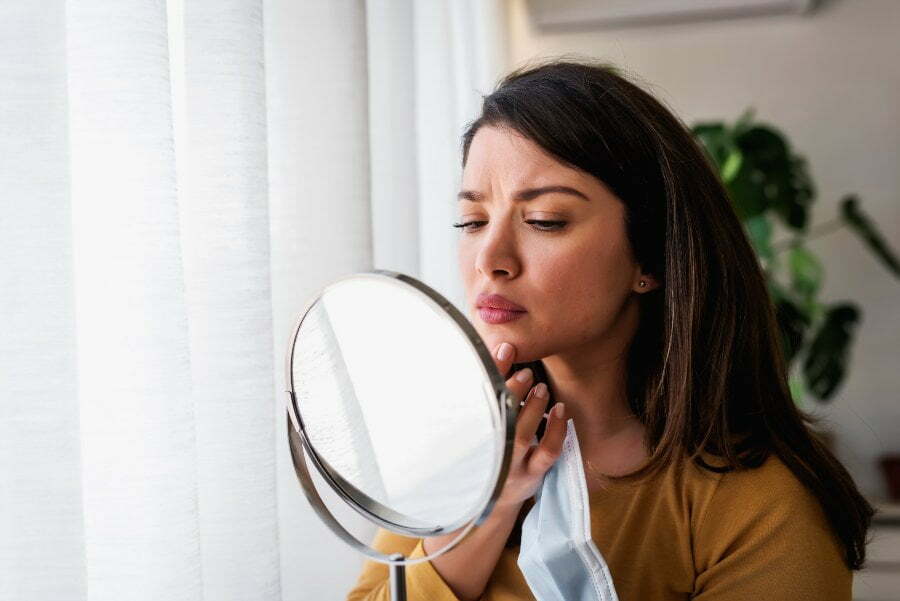
What is maskne?
Because facial coverings prevent airflow to the face, which is the point, they can cause the skin underneath to become damp and warm as a result. A mask also traps sweat, oil, and debris from previous uses. This type of environment helps foster bacteria growth, which then leads to acne, explains James Beckman, MD, board-certified plastic surgeon and Therapon Skin Health.
Dr. Beckman likens maskne to a type of acne often seen on football players. “These athletes experience a condition called acne mechanica, which is the result of wearing athletic gear like shoulder pads and chin straps that rub directly on the skin,” he says. “The friction essentially grinds in dirt and bacteria, trapping it in hair follicles and clogging pores.” Masks can cause friction on the face in a similar fashion, thus leading to increased breakouts.
Read More: 12 Acne Myths It’s Time To Stop Believing
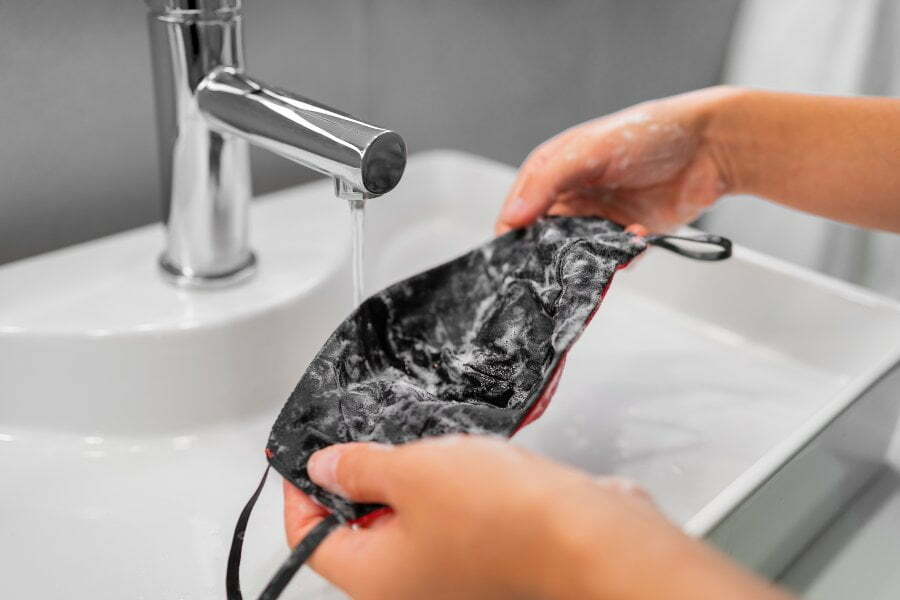
What can you do to prevent maskne?
Now that you have the answer to “what is maskne,” you’re probably wondering what you can do to prevent it. Keeping your mask clean is the single most effective way to prevent maskne, says Dr. Scott Paviol, MD, a board-certified dermatologist. “Wash your masks often and rotate them between use,” he says, adding that a backup mask is always advised. “By doing this, you will minimize the sweat and oil build-up on skin, which will also help minimize bacterial imbalances.”
Dr. Viselav Tonkovic-Capin, MD, board-certified dermatologist, suggests washing cloth masks daily in hot water with bleach, if possible, or disinfecting laundry detergent. Try Clorox 2 Free & Clear for Colors, which is available at mass retailers. And when adding cloth masks to a load of linens or clothes, place them in a lingerie bag to prevent stretching and damage that reduces their efficacy.
Masks that are not washable, including surgical masks and N95 masks, can either be exposed to sunlight or sprayed down with rubbing alcohol between use. However, it’s best to discard paper masks (aka surgical masks) after each use to reduce your risk of breakouts.
Read More: Is The Air In Your Home Giving You Acne?
The best skincare routine to prevent and treat acne:
To successfully combat maskne-causing bacteria and inflammation, cosmetic dermatologist Dr. Michele Green, MD, suggests a skincare routine that is composed of anti-inflammatory, anti-bacterial, and exfoliating ingredients. Here’s a step-by-step guide, as recommended by dermatologists.
1. Wash your face before wearing a mask.
“Prior to wearing a mask, make sure you have cleaned your face thoroughly with a gentle cleanser,” says Dr. Rina Allawh, MD, FAAD, a board-certified dermatologist. “This will help remove any oils or debris from the skin’s surface.” She recommends CeraVe Hydrating Facial Cleanser ($15; amazon.com). Or, when you’re pressed for time, a simple wet wipe will work.
Read More: I Was Washing My Face Wrong For 10 Years – Here’s What Happened When I Started Doing It Right
2. Create a barrier.
Sudden acne flare-ups can be a sign of a damaged skin barrier. If your skin is dry, flaky, and lined with maskne, try applying a light layer of petrolatum or a cermide-based balm under your mask. This will create a barrier that protects the stratum corneum, or outermost layer of skin, preventing moisture loss and irritation.
3. Use a cleansing wipe immediately after wearing a mask.
As soon as you take off your mask, gently wipe down your skin using a cleansing cloth to remove excess oil, debris, and dirt from your face. Dr. Allawh recommends LaRoche-Posay Effaclar Facial Wipes for Oil Skin ($10; ulta.com). Keep a pack by your sink, as well as in your purse or car for on-the-go use.
4. Cleanse with a benzoyl peroxide wash.
“Washing your face in the evening with a benzoyl peroxide wash will help prevent and treat early inflammatory acne,” says Dr. Allawh. It’s a powerful ingredient that inhibits the growth of p.acnes, the bacteria that causes acne, while also helping to control sebum production and unclog pores. Try PanOxyl Acne Foaming Wash ($10; amazon.com). To minimize dryness or irritation, alternate it with a mild cleanser such as the CeraVe mentioned above.
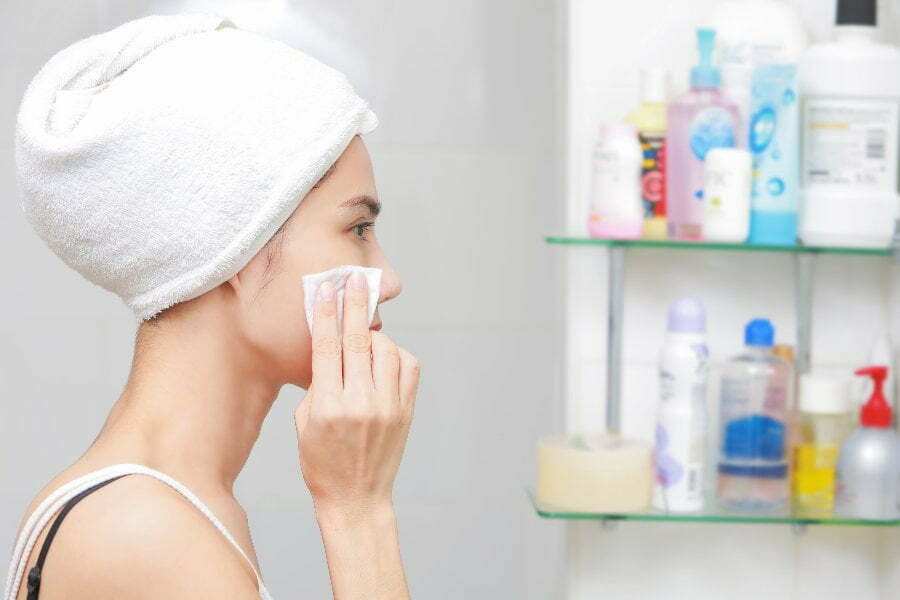
5. Incorporate chemical exfoliants.
Chemical exfoliants like salicylic acid use acids to gently slough off dead skin and unclog pores. “Not only does salicylic acid effectively exfoliate, eliminating whiteheads and blackheads, but it also has anti-inflammatory and anti-bacterial properties,” adds Dr. Green. Glycolic acid is another great exfoliating ingredient, as it dissolves the glue that holds together pore-clogging dead skin cells so they shed. One more benefit these ingredients share: They reduce excess sebum production, says Dr. Green. Try Paula’s Choice Skin Perfecting 25% AHA + 2% BHA Exfoliant Peel ($39; sephora.com).
Read More: The Best Way To Exfoliate Based On Your Skin Type
6. Don’t forget to moisturize.
Continue moisturizing your skin, even if you are experiencing new breakouts. Skin that is dry or dehydrated (a potential side effect of the acne-fighting products above) can cause oil glands to go into overdrive and increase the production of sebum. Look for a lightweight, non-comedogenic moisturizer, which won’t clog your pores, and apply it morning and night. You can’t go wrong with Clinique’s Moisture Surge 100-Hour Auto-Replenishing Hydrator ($25; sephora.com).
7. Consider a retinol treatment.
“For those who are experiencing more comedonal acne, a topical retinol at bedtime is recommended,” says Dr. Allawh. The powerful ingredient unclogs pores, works to normalize skin cell turnover, and acts as an anti-inflammatory. “Look for an over-the-counter retinol that is lightweight, non-greasy, and provides hydration in addition to the benefits of a pure retinol,” she advises. Her pick: Neutrogena Rapid Wrinkle Repair Retinol Facial Oil ($38; ulta.com).
8. Minimize makeup.
Wearing occlusive makeup products under your mask can clog pores and exacerbate maskne, says Dr. Paviol. Skip heavy foundations altogether—half your face is covered after all—or opt for a lightweight tinted moisturizer when you want some coverage. We love Ilia Super Serum Skin Tint ($48; dermstore.com), which is non-comedogenic, boasts SPF 40, and has acne-fighting niacinamide.
Read More: The Best Tinted Moisturizers For Every Skin Type, According To Pro Makeup Artists
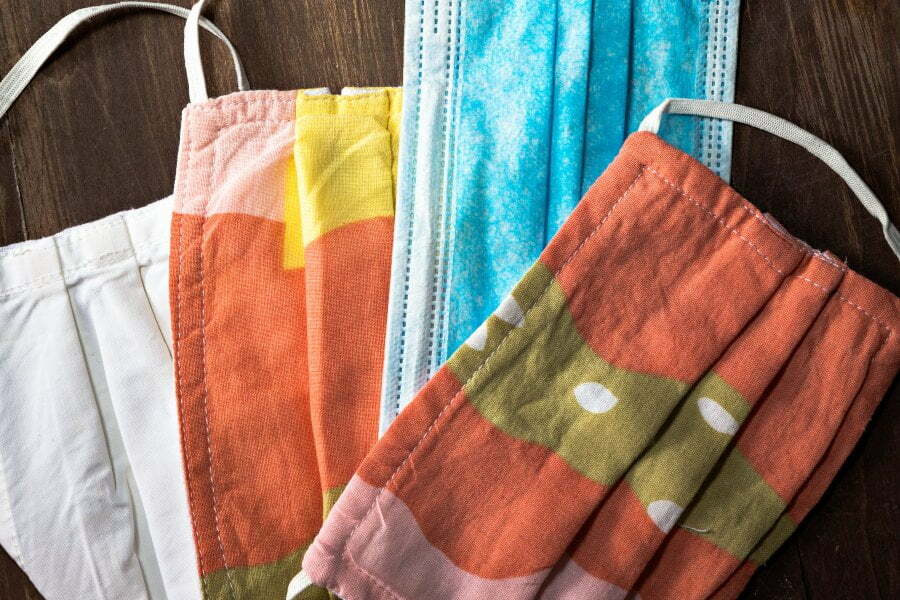
Try changing the type of mask you’re wearing, too.
If you wash your face masks regularly and follow a strict skincare routine, but still struggle with maskne breakouts, Dr. Tonkovic-Capin suggests trying new type of mask. “Often just changing the type mask being worn helps clear up maskne, as certain fabrics or materials work better for different skin types,” he explains.
For oily or acne-prone skin types, Dr. Tonkovic-Capin recommends two- to three-layer surgical paper masks. You may also want to consider an antimicrobial face mask; these cloth coverings are designed to help prevent the growth of bacteria on the surface of the fabric, and thus minimize cross-contamination. We like the Jaanuu Reusable Antimicrobial Face Mask ($39 for 5; revolve.com).
Dry skin types will benefit most from silk masks, like the Slip Reusable Face Mask ($39; sephora.com), while all other skin types should tolerate simple cotton masks that are free of dyes.
Schedule an appointment with a pro.
When all else fails, schedule an appointment with a dermatologist. “If you continue to experience acne breakouts, scheduling an appointment with a board-certified dermatologist may be helpful,” says Dr. Allawh. “These trained professionals can provide oral or topical prescription treatments, as well as guidance on how to find the best routine suited for your needs.”
You might also like: 6 Things You Should Never Do If You Have Oily Skin
"We often receive complimentary products to review at Family Proof. Each product we feature has been independently selected and reviewed by our editorial team."
